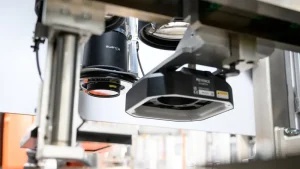According to recent research, over three-quarters of business leaders now recognise GenAI’s competitive advantage. Worldwide adoption has jumped dramatically this year, with McKinsey revealing that half of the global organisations it has surveyed are using GenAI in at least two business functions.
And yet, for all the hype, real-world experience suggests that many smaller companies struggle to get a foothold on the GenAI ladder. They’re often unable to find the right use cases to drive real-world value from this transformative tech.
The ChatGPT-inspired frenzy is partly to blame for this disconnect. With the spotlight fixed on Silicon Valley’s multi-billion dollar attempt to disrupt industries and rewire business models from scratch, the smaller, day-to-day needs of the wider business community are getting lost in the mix.
There’s no question that startups and scaleups across a broad cross-section of industries can benefit from GenAI’s capabilities. But first, we need to be realistic about what kind of changes are possible with limited resources.
The following 3A’s framework – Automate, Accelerate, and Augment – is designed to help SMEs do exactly that. It’s a playbook for achieving low-cost, low-risk AI results within a timescale of just one or two years:
1. Automate to free up human creativity
This step involves identifying high-volume, low-complexity tasks that can be automated using GenAI to cut costs and redirect human creativity.
One company leading the charge is Hyro, which is helping companies across sectors understand how to automate repetitive communication tasks. Take call centre automation, where Hyro’s GenAI-based tech directs complex queries to agents and diverts simple calls, such as rescheduling appointments, to self-service channels. The company has made particular progress in helping healthcare companies increase their responsiveness to customers cost-effectively.
Over in real estate, property companies are using GenAI to craft accurate listing descriptions and image captions in just minutes. London-based Coldwell Banker has added GenAI skills to its Listing Concierge, a marketing platform home to a wide range of services from hi-res photography to videography.

GenAI is used to craft accurate listings and image captions in minutes
While its business remains “very human-focused”, the tech enables agents to “spend less time on manual tasks and more time delivering tangible value to their clients”.
Meanwhile, in the global education sector, Morgan Stanley Research analysts predict that the smart application of GenAI could spark $200 billion in extra value by 2025. Potential use cases involve a chatbot tool to review and grade essays or exams or a virtual assistant to streamline class scheduling, freeing up more time for teachers to interact with their students.
US course provider Udacity has gone one step further, using OpenAI’s GPT-4 to create a virtual, on-demand AI mentor. This online chatbot provides learning tailored to the needs of each individual student when they need it the most – helping to summarise concepts or provide definitions, for instance. It can handle thousands of personalised interactions at once in a range of different languages.
Udacity is keen to emphasise that its Gen AI mentor is offered alongside real-life mentors. The platform also advises students to review the chatbot’s output in case of errors. This highlights the importance of regular monitoring in automation. It’s a shortcut for productivity and helps foster a culture of innovation – but humans must also be present to ensure relevant and valuable outcomes.
2. Accelerate real-time responsiveness
This acceleration phase is about using GenAI to reduce the time and resources needed where speed to market is critical. Retail is one sector embracing GenAI’s ability to accelerate performance, using it to create new product designs, generate content and make personalised product recommendations.
For instance, Shopify Magic, is a collection of free AI-enabled features integrated across Shopify’s workflows to make it easier for would-be entrepreneurs to launch, manage, and grow a business.
Meanwhile, French supermarket Carrefour has AI-powered chatbot, Hopla, that caters to its target audience of busy individuals in their 30s and 40s. Juggling family and work responsibilities, this demographic has limited time to spend shopping, so assistant “Hopla” produces menus and corresponding shopping lists that are scoped to changing individual budgets and dietary preferences.

French supermarket chain Carrefour’s AI chatbot, Hopla
Robust data analysis and modelling capabilities are central to this step to ensure accuracy, however. A culture of agility is also essential so businesses can quickly seize the opportunities brought about by AI-powered accelerations.
3. Augment for ultimate decision power
In the augmentation part of the framework, businesses use GenAI-driven insights and predictions to enhance human talent in areas such as forecasting and decision-making. Healthcare is a sector that’s well suited for GenAI-enabled augmentation.
The World Economic Forum suggests that a GenAI virtual assistant could provide a viable “second opinion” in healthcare, instantly evaluating records for missed information or alternate diagnoses – thereby allowing professionals to arrive at the right treatments sooner.
This same potential to mitigate human error or bias can also be powerfully applied in a manufacturing context. For example, the Bosch Research team is using GenAI to synthetically map potential product defaults for the company’s Hildesheim manufacturing plant, before they occur.

The quality of parts is checked using AI-based image recognition
In a setting where even small errors can lead to costly batch recalls, the AI-based inspection model generates artificial images of all defect types, including new product lines. This allows models for automated optical inspections to be trained at a much earlier stage. Bosch predicts these improvements will bring about productivity increases in the six-figure euro range.
It’s important that GenAI augmentation isn’t seen as a quick fix though – or a low-cost replacement for human talent. The big win for businesses of all sizes will be harnessing the power of GenAI to maximise the workforce’s potential.
Adopting a 3A-style blueprint can help businesses focus their investment and resources, enabling them to determine how GenAI will drive strategic gains. The result is a quicker, more tangible route into AI adoption, dodging the need for eye-watering budgets or seemingly impossible goals.
Most of all, quick-win changes with GenAI rely on businesses viewing it as a super-powerful junior assistant. It can complement human abilities with its scale of training and data-crunching might, but it cannot replace our intellect. As such, it works best as a driver of small, steady productivity benefits rather than a cure-all for sweeping upheaval.